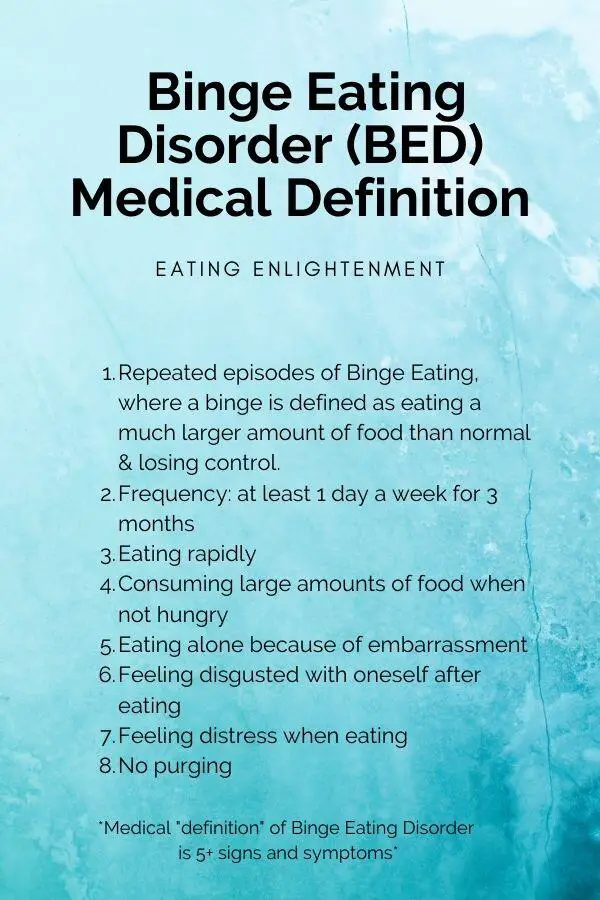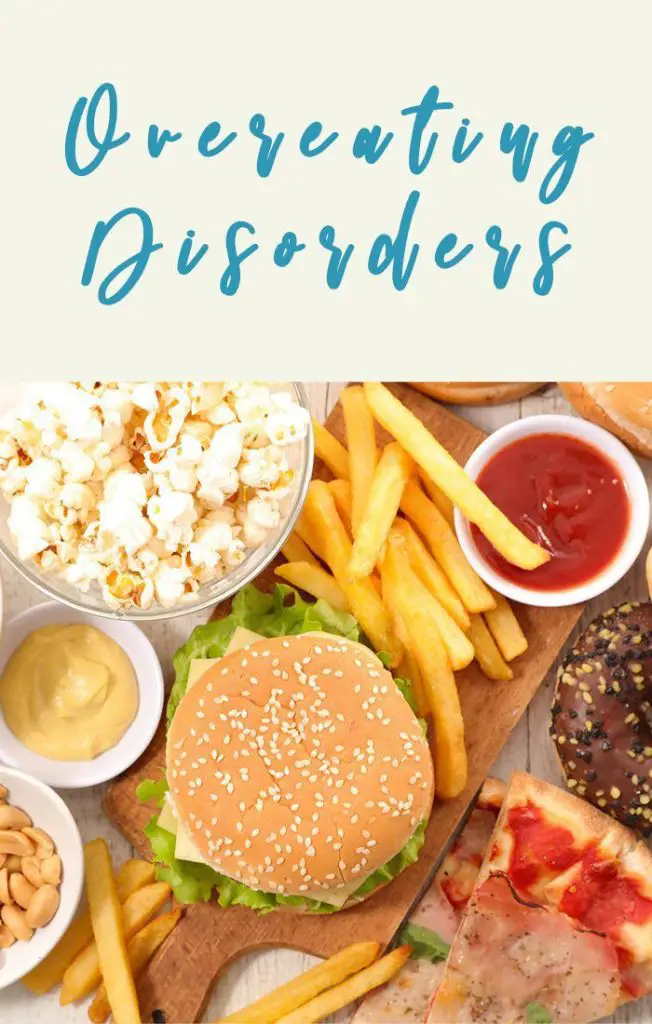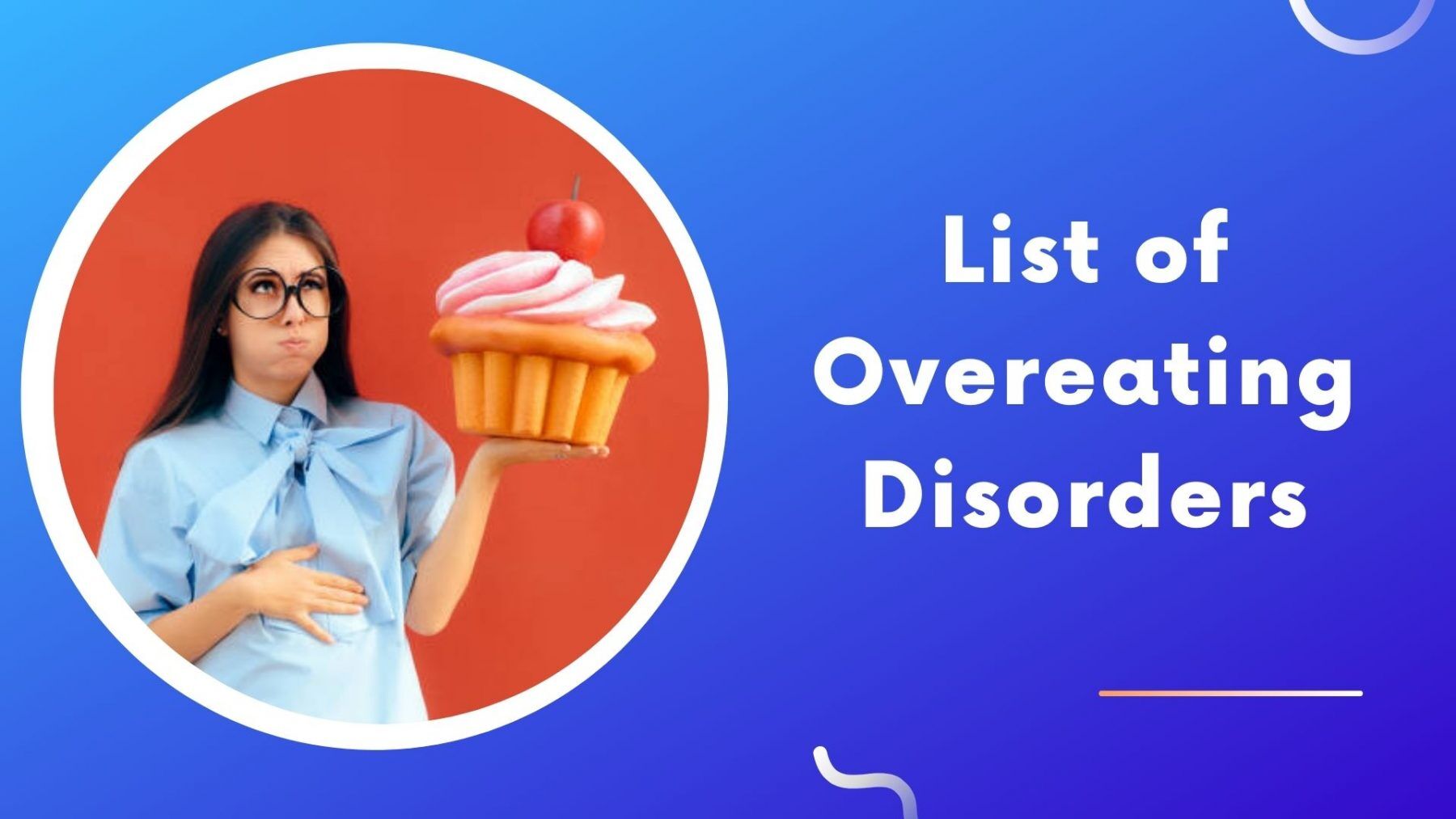Overeating disorders are surprisingly common.
In the United States, overeating disorders are very common. In fact, an estimated 3.5% of adults in America are ‘officially’ affected by overeating disorders. This is a large number that should not be ignored!
But if you occasionally eat too much after a stressful work day, does this mean you have a disorder?
No! The word ‘disorder’ is confusing. Do you have a disorder if you only struggle with food a little?
Unfortunately, we have official classifications for only two overeating disorders:
- Binge Eating Disorder (BED)
- Bulimia Nervosa
That’s pretty much it.
Only 2 official Overeating Disorders!
There is no other ‘official’ medical language for other types of eating struggles, like Emotional Eating and Food Addiction.
(Though the DSM-5 does list other eating disorders such as Anorexia nervosa, in this article we’re only focusing on the eating disorders involving overeating!)
So from a medical perspective Emotional Eating is not an official disorder. You can’t bill your insurance for ‘Emotional Eating Therapy’, but you can bill for Binge Eating Disorder.
But we also need to talk about these unofficial types too!
I mean, certainly there is some ‘disorder’ within Emotional Eating too, right?
Let’s examine what the word ‘disorder’ means anyhow…
The dictionary definition of disorder means ‘a state of confusion’.
If you are emotionally eating and can’t stop, then I’m guessing you are in a state of confusion too!
Let’s not limit ourselves to dry, technical definitions. Otherwise we block people from learning about concepts which would help them identify, name, and begin changing their behaviors.
Below is a list of overeating disorders, both the official ones and the unofficial, so you can better understand your eating habits.
Official Overeating Disorders
Binge Eating Disorder (BED)

BED is characterized by recurrent episodes of uncontrollable consumption of large amounts of food.
In May 2013, the American Psychiatric Association officially listed Binge Eating Disorder in the DSM-5.
The DSM-5 is the 5th revision of the Diagnostic and Statistical Manual of Mental Disorders. This is where we get our official eating disorder definitions!
Binge Eating Disorder is where you overeat many times a week, but it’s not just about overeating. You have to experience these extra symptoms:
- eating unusually large amount of food in a short period of time
- feeling unable to control the amount eaten, a distinct loss of control
- eating rapidly during binge episodes
- experiencing feelings of shame and guilt after overeating or “bingeing” (aka emotional distress)
- bingeing at least once per week for last 3 months
BED is classified as different from “regular” overeating, where you might overeat several times a week but don’t exhibit these other requisites of Binge Eating Disorder.
As noted above, in the United States, about 3.5% of people are diagnosed with Binge Eating Disorder.
Bulimia Nervosa

In a nutshell, Bulimia is where you eat too much, feel really guilty or really worried about weight gain or body image, and then rid yourself of the calories you just ate.
How do you get rid of calories?
- Often, people force themselves to vomit.
- Other times they exercise for hours on end to burn off all the extra calories.
- They may also use laxatives.
But these strategies are horrible and ineffective.
When you vomit your food back up, you aren’t really getting rid of the calories. And when you exercise for hours on end it can actually make your metabolism slow down.
Sad that we only have these two ‘official’ overeating disorders.
See, I work at a residential Eating Disorder treatment facility. I often field calls from people who ask about insurance. They struggle with an overeating disorder and want to get help.
But financially, they don’t qualify for insurance because their symptoms aren’t severe enough to be diagnosed as one of these two disorders.
For example, let’s say you struggle with bingeing and have been for years, but you have your good weeks where your body image doesn’t bother you too much.
Well, if you haven’t binged weekly for the past 3 months, then you won’t be able to qualify for insurance. Because the technical, medical definition of Binge Eating Disorder requires you to have a weekly binge episode, with large amounts of food.
This means people with binge eating habits don’t qualify for Binge Eating Disorder treatment covered by insurance!
Now sometimes you’ll get lucky. Your insurance provider can qualify you under the Other Specified Feeding and Eating Disorder (OSFED) label depending on your doctor’s advice, diagnosis or treatment experience.
This is an official Eating Disorder diagnosis found in the DSM-5, but this is more rare.
Let’s now take a look at the unofficial overeating ‘disorders’.
Unofficial Eating Disorders
Emotional Eating

Emotionally eating involves consuming food when you are happy or sad, bored or excited, most often as an attempt to change how you feel emotionally.
This is the most common overeating struggle. Why? Because every person on planet earth emotionally eats to some degree.
Yes, 100% of people living on planet earth emotionally eat!
Just the other day I was feeling down, and so I made myself a peanut butter sandwich, turned on Youtube, and sat on the couch for some time.
After an hour, I felt better.
This is an example of emotional eating, but I wouldn’t say I have a ‘problem’ with food (at least these days I don’t!).
See, I also manage stress and other negative emotions in a variety of ways like through:
- walking
- journaling
- finding support with friends
When you occasionally emotionally eat, you do NOT have a problem with eating disorders. It’s just part of being human.
But for someone who struggles with Emotional Eating, very often food is the ONLY way they know how to calm down and feel better.
This is when Emotional Eating becomes a serious problem, somewhat akin to Binge Eating Disorder.
Soon you are being triggered to eat at minor stressors, and obviously weight gain and other negative consequences are soon to follow. :/
Food Addiction
Food addiction means uncontrollable eating behavior that is habitual, despite consequences.
Admittedly, Food Addiction isn’t as common as Emotional Eating.
But Overeaters Anonymous, the most popular support group for overeating disorders, generally categorizes all forms of overeating as either Food Addiction or Compulsive Overeating.
The difference is emotion. Food Addiction is a compulsion without emotional ties.
Emotional Eating is also a compulsion but is different because here food is abused to deal with intense emotions.
But Food Addiction is less about the emotional connection at all… it’s just about the overeating itself!
Of course, people with Food Addiction also say they struggle with Emotional Eating too.
Talk about confusing!
Compulsive Overeating

Compulsive overeating is characterized by the absence of bingeing or purging but by still having a preoccupation with thoughts about food and weight.
This is the second term Overeaters Anonymous popularized, along with Food Addiction. For more info about Overeaters Anonymous, check out their website here.
Oftentimes these words are used as synonyms in Overeaters Anonymous lingo. But there are slight differences in these two terms.
The difference is that Compulsive Overeating is more severe than Food Addiction.
Food addiction is where you feel compulsions to eat, for sometimes no reason at all. Food is a compulsion – but you don’t necessarily overeat.
Compulsive Overeating is the same, but you overeat. Food is a compulsion, and when you indulge in the compulsion you overeat.
This linguistic difference might seem small, and I get that!
But Food Addiction helps give language to people who overeat, but don’t overeat till the point of being bloated and full.
For example, one client I’m working with describes her overeating as ‘death by a thousand cuts’.
They never have one ‘killer’ binge episode that causes them to gain 5-10 pounds.
Instead, they constantly nibble and are eating throughout the day. This is more of the Food Addiction.
Compulsive Overeating is very like Binge Eating Disorder where you are eating a ton of food, experience a loss of control, and end up feeling very bloated.
In my opinion, people with binge eating and compulsive overeating habits actually have the essentially the same mental health problem!
The only main difference being each calling their symptoms by different names, and one being covered by insurance.
Overeating Disorders – Final Thoughts
If you think that food has become a problem in your life, it might be time to seek help.
There are many different eating disorders out there and they all need treatment before things get worse.
You’ve landed on this page because you were searching for information about overeating. We hope the blog post was helpful!




